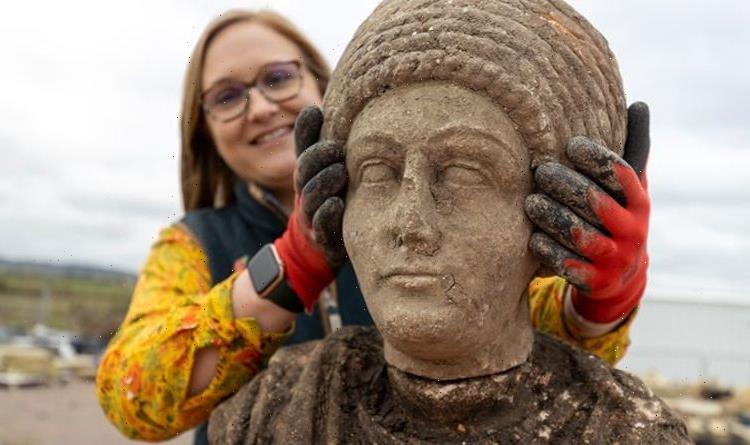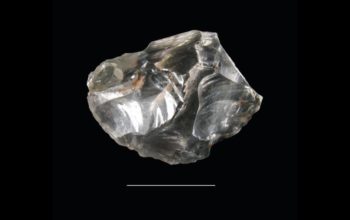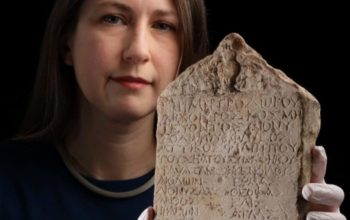An incredible archaeology breakthrough! Rare 1000 year-old Roman statues have been unearthed during a high-speed railway dig in the UK
The following written content from Harriet Sherwood
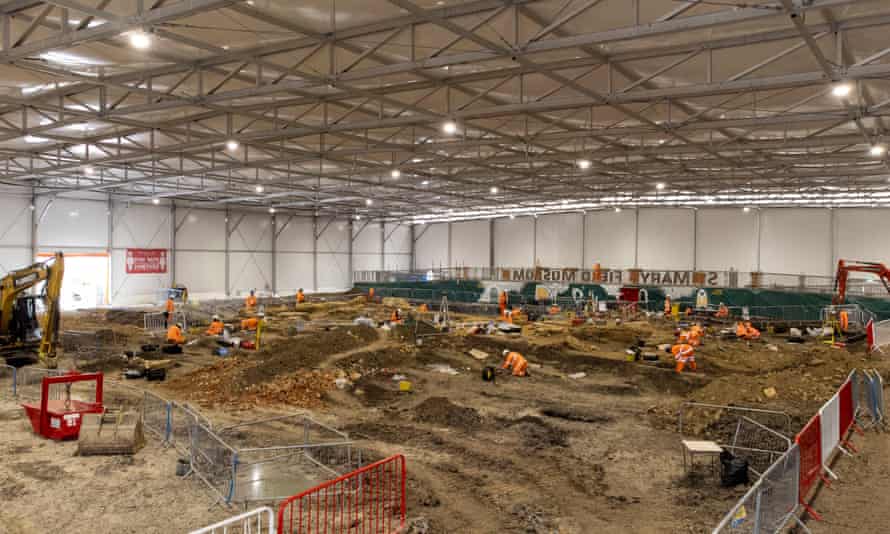
Heads of man, woman and child found on site of Stoke Mandeville church built in 1080 and abandoned 800 years later
Roman statues of a man, woman and child have been uncovered by archaeologists at an abandoned medieval church on the route of the HS2 high-speed railway.
The discovery was “utterly astounding”, according to Rachel Wood, the lead archaeologist at the site in Stoke Mandeville, Buckinghamshire. “They’re really rare finds in the UK,” she said.
“The statues are exceptionally well preserved, and you really get an impression of the people they depict – literally looking into the faces of the past is a unique experience.”
A hexagonal glass Roman jug was also uncovered. Despite being in the ground for what is thought to be more than 1,000 years, large pieces were intact. The only known comparable item is a vessel on display in New York’s Metropolitan Museum of Art.
The statues were unearthed at the ruins of a Norman church, where a team of archaeologists has been working for the past six months.
Saint Mary’s church was built in 1080, and renovated in the 13th, 14th and 17th centuries. It was abandoned in 1880, and demolished in 1966 after being declared dangerous. Its ruins became overgrown with vegetation.
In May, archaeologists and engineers began removing the remaining structure of the church and excavating the burial ground that was in use for 900 years, with the last recorded interment in 1908.
Experts believe the location was used as a Roman mausoleum before the Norman church was built. About 3,000 bodies have been removed and will be reburied at a new site.
Wood said the discovery of the statues and jug “leads us to wonder what else might be buried beneath England’s medieval village churches. This has truly been a once in a lifetime site and we are all looking forward to hearing what more the specialists can tell us about these incredible statues and the history of the site before the construction of the Norman church.”
They have been sent to a laboratory for specialist cleaning and analysis.
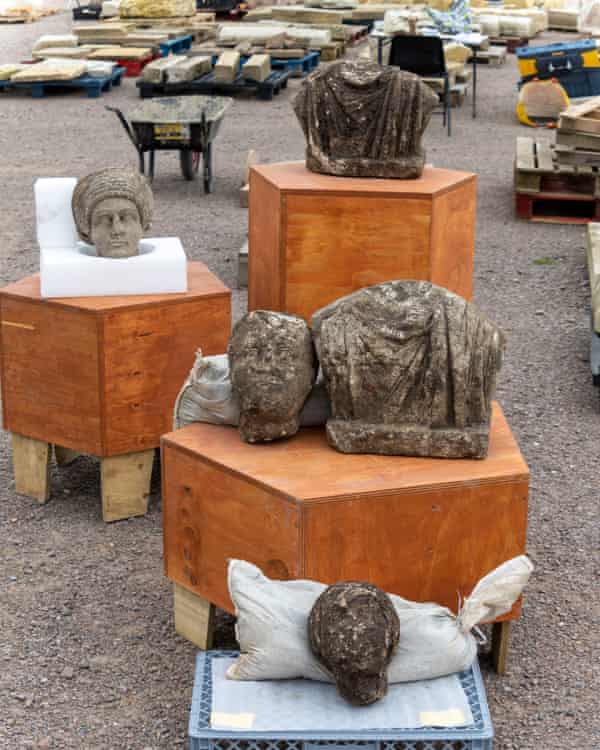
More than 1,000 archaeologists have worked at more than 60 sites along the HS2 route between London and the West Midlands over the past three years.
At Saint James’s Garden near Euston station in central London, more than 50,000 skeletons were exhumed from a burial ground. In Birmingham, more than 6,500 skeletons were uncovered from an 18th-century cemetery.
Archaeologists began work on the 150-mile route in 2018.
Mike Court, the lead archaeologist at HS2, said the Roman statues found at Stoke Mandeville were “just some of the incredible artefacts uncovered between London and the West Midlands”.
He added: “HS2’s unprecedented archaeology programme has given us new insights into Britain’s history, providing evidence of where and how our ancestors lived.” Read more from the Guardian

